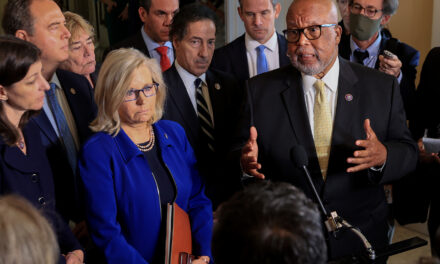
Covid-19 Live News: Updates on the Virus, Variants and Vaccines

More than three million people have died from Covid-19 since the first cases surfaced more than 14 months ago and upended life for people across the globe.
Global deaths reached that toll on Saturday, according to a New York Times database, as the number of confirmed coronavirus cases surged past 140 million.
The pace of deaths has been accelerating as countries race to provide enough vaccines to slow the relentless pace of infections. The world did not record one million deaths until Sept. 28, 2020, but there were two million by Jan. 15, some four months later. And the third million took just three months.
The United States, Brazil and Mexico lead the world in Covid-19 deaths.
In the United States, more than 565,700 virus-related deaths have been confirmed, about one in 567 people — the most of any other country.
In Latin America, Mexico, Brazil, Colombia, Peru, Argentina and others have been hit hard by the virus.
Mexico has recorded more than 211,600 deaths. By comparison, Japan, which has a similar sized population, has had around 9,500 deaths.
In Brazil, where the spread of the virus has been fueled by a highly contagious variant, political infighting and distrust of science, more than 368,700 people have died. The virus is still pummeling the country, which is averaging over 2,860 deaths per day.
The leaders of both countries, which are the region’s two largest nations, have largely dismissed the dangers and have resisted calls for a lockdown.
India, the country with the fourth-highest number of total coronavirus deaths, has recorded more than 175,600 deaths. The virus is surging there once again, prompting more shutdowns and another mass migration away from big cities.
In the United Kingdom — where Britain recently ended one of the longest and most stringent lockdowns in the world — more than 127,200 deaths have been recorded. And in Italy, once the nightmarish epicenter of the virus, there have been more than 116,300 confirmed deaths.
Sweden, where officials have taken a more lax approach to combating the coronavirus crisis, has experienced an increase in new cases and deaths recently, with more than 13,700 deaths.
As dangerous virus variants spread, many developed countries are racing to vaccinate their populations as fast as possible. More than 870 million vaccine doses have been administered worldwide, though some countries have yet to report a single dose, according to a New York Times database that tracks the worldwide rollout of shots.

The federal government’s call for a pause on using Johnson & Johnson’s Covid-19 vaccine could last at least another week, further complicating efforts by federal and state health officials to reschedule appointments, and reassure jittery Americans that the vaccine is safe and effective.
The Centers for Disease Control and Prevention’s independent vaccine advisory panel, known as the Advisory Committee on Immunization Practices, or ACIP, has been scheduled to meet for a second time since shots were halted, next Friday, to discuss safety data related to a small number of blood-clotting cases in Johnson & Johnson vaccine recipients. It is unclear whether the vaccine was responsible for the clots.
The public, six-hour meeting could conclude with a vote, for example, to recommend to continue the pause, to modify the F.D.A.’s authorization of the single-dose vaccine or to rescind the pause altogether. The federal government could then act quickly to follow the guidance.
“We recognize the critical importance of moving quickly. That’s why we will have two unscheduled ACIP meetings in a 10-day period,” Dr. Rochelle P. Walensky, the C.D.C. director, said at a White House news conference Friday.
She said that the C.D.C. had contacted over 10,000 providers “to ensure that they know what kinds of cases to look for.”
The panel’s decision was a key part of the federal government’s still mostly undefined plan for resolving the pause, which Dr. Janet Woodcock, the acting commissioner of the F.D.A., told reporters on Tuesday might last only “a matter of days.” But the panel of expert advisers, whose recommendations carry significant weight with state health departments and physicians, decided Wednesday to wait on a vote while they take more time to assess a possible link to the rare but serious blood-clotting disorder.
Dr. Anthony S. Fauci, the government’s top infectious disease expert, told lawmakers at a hearing on Thursday that “hopefully we’ll get a decision quite soon as to whether or not we can get back on track with this very effective vaccine.” State health departments have rescheduled appointments and substituted two-dose vaccines made by Pfizer-BioNTech and Moderna — a plan that White House officials have referenced as a quick way to make up for the gap.
While Johnson & Johnson’s vaccine has accounted for a fraction of U.S. vaccinations, it has been a key tool in the Biden administration’s strategy. The shot can be kept at normal refrigeration temperatures for three months, and at one dose, allowed for people to dispense with vaccination in a single go. Some public health officials worry the pause may deepen hesitancy. And there are concerns about the risks posed to the global vaccination drive in countries that can ill afford to be particular about shots.
In the United States, the pause has had immediate consequences for local officials, who have worked to vaccinate vulnerable populations with the shot: homeless people in Baltimore, homebound residents in the District of Columbia, the poor and uninsured in Massachusetts and rural residents in a number of states.
In New York City, Mayor Bill de Blasio said Friday on WNYC that the city’s overall vaccination campaign had not been derailed by the pause, but the greatest disruption had been to the city’s program for homebound people, which relied on the Johnson and Johnson vaccine and has ground to a halt for now.
The city estimated that there are 23,000 homebound candidates for the program, and said that its vaccination teams have so far made 3,600 visits. The effort has been ramping up, and has been recently vaccinating 1,200 people per week. On each visit, the program allows for the homebound senior to get the shot, along with anyone else in the household who is eligible. Mr. de Blasio said that he hoped the city would again be able to use the Johnson & Johnson vaccine for that population, but if not, the program would continue with the other authorized vaccines.
About 7.8 million Americans have received the Johnson & Johnson shot, with about 10 million doses unused.
Setbacks with the vaccine, including a mix-up in a Baltimore plant that recently contaminated up to 15 million doses of it, have caused the White House to revise its math in projecting when the nation will have enough doses to cover every American adult, which President Biden had predicted would happen by the end of May.
The White House press secretary, Jen Psaki, said on Thursday that there would be enough doses to cover 80 percent of the adult population by that point, or likely enough for every adult who wants one. She added that there would be enough for 90 percent of the population by the end of July.
Sheryl Gay Stolberg, Daniel E. Slotnik and Sharon Otterman contributed reporting.
The New York Times examined survey and vaccine administration data for nearly every U.S. county and found that both willingness to receive a vaccine and actual vaccination rates to date were lower, on average, in counties where a majority of residents voted to re-elect former President Donald J. Trump in 2020.

China’s CoronaVac vaccine provides robust protection against Covid-19, Chilean health authorities said Friday, citing the results of a study that monitored the health outcomes of millions of people who received the inoculant.
The two-dose vaccine, produced by the Beijing-based pharmaceutical company Sinovac Biotech, was 67 percent effective at preventing symptomatic Covid-19 cases and 80 percent effective at preventing death, according to Chile’s health ministry. The study also found the shot was 85 percent effective at preventing cases that required hospitalization.
The study in Chile, which has carried out one of the fastest Covid-19 vaccination campaigns in the world, provides a more positive assessment of the vaccine’s effectiveness than a clinical trial in Brazil that relied on medical professionals.
In January, scientists in Brazil said CoronaVac had an efficacy of just over 50 percent at preventing symptomatic cases, an underwhelming level compared to other Covid-19 vaccines. The study in Chile analyzed the health outcomes of more than 10 million people, including four million who received CoronaVac.
Officials in Chile called the results very promising for the country and the global effort to end the pandemic. CoronaVac is the most widely used vaccine in Latin America, where several countries, including Chile, have grappled with a rise of Covid-19 cases in recent months.
“This study is not only very important for Chile, but also for the world and the scientific community,” Chile’s deputy health secretary, Paula Daza, said in a statement. “It shows this vaccine is safe and that we must continue with the vaccination process.”
CoronaVac is being widely used in Brazil, where deaths have soared, and several other countries in the developing world. It is cheaper and easier to handle than the vaccines developed by Pfizer and Moderna.
“The effectiveness of the Sinovac vaccine reported by the Chilean Ministry of Health is encouraging news for low-income countries without access to Western vaccines,” said Denise Garrett, an epidemiologist at the Sabin Vaccine Institute in Washington, D.C.

Pregnant women in Britain are now eligible to receive a Covid-19 vaccine, British health authorities announced on Friday, citing data from the Centers for Disease Control and Prevention that showed that about 90,000 pregnant women had been vaccinated in the United States without any health issues.
The new guidance states that women in Britain who are trying to get pregnant, recently gave birth or are breastfeeding could be vaccinated with any available vaccine, but that the Pfizer-BioNTech or Moderna doses are preferred because “there is more real-world safety data from the U.S.”
Early in the pandemic, Britain had recommended against vaccines for pregnant women, citing a lack of research on side effects, but the country expanded access late last year to women at high risk of serious complications from Covid-19.
Last month, the C.D.C. and the World Health Organization recommended that pregnant women could get vaccinated, but should still consult their doctors. The W.H.O. limits its recommendations to pregnant women at high risk of contracting the coronavirus, including health care workers or those with underlying conditions.
If infected, pregnant women face a heightened risk of severe illness and death. During the pandemic, more pregnant women have experienced complications or delivered stillborn, according to an analysis of 40 studies in 17 countries published in the journal Lancet Global Health last month.
Vaccines are generally considered to be safe, and pregnant women have been urged to be immunized for influenza and other diseases since the 1960s, even in the absence of rigorous clinical trials to test them.
in case you missed it

Safety worries about the AstraZeneca and Johnson & Johnson Covid-19 vaccines in the United States and Europe have reverberated around the world, undercutting faith in two sorely needed shots and threatening to prolong the coronavirus pandemic in poorer countries that cannot afford to be choosy about vaccines. With new infections surging on nearly every continent, signs that the vaccination drive is in peril are emerging, most disconcertingly in the continent of Africa.
In many African countries, vaccination campaigns have been hindered by factors like science skepticism, limited or no efforts to educate the public, inefficient distribution systems and concerns over the extremely rare but serious cases of blood clots being investigated among a small number of people who received the AstraZeneca and Johnson & Johnson vaccines. Those two vaccines, which require less stringent refrigeration, are crucial to efforts to immunize populations in poorer countries.
But in Malawi, some people are asking doctors how to flush the AstraZeneca vaccine from their bodies. In South Africa, health officials have stopped giving the Johnson & Johnson shot, two months after dropping the AstraZeneca vaccine because it was less effective against the dominant variant there.
Across the continent, public confusion over whether to get inoculated — and if so when and where to do so — has contributed to the expiration of doses. South Sudan saw 59,000 unused doses expire this month, and in the Democratic Republic of Congo, 1.7 million AstraZeneca doses have gone unused.
The actions of U.S. and European officials have stoked doubts in poorer countries where a history of colonialism and unethical medical practices have left a legacy of mistrust in vaccines. If the perception takes hold that rich countries are dumping second-rate shots on poorer nations, those suspicions could harden, slowing the worldwide rollout of desperately needed doses.
Here’s what else you may have missed:
-
In India, about 32 million people were driven into poverty by the pandemic last year, according to the Pew Research Center — accounting for a majority of the 54 million who slipped out of the middle class worldwide. A second wave of Covid-19 is threatening the dreams of millions more looking for a better life.
-
Keeping the middle seats vacant during a flight could reduce passengers’ exposure to airborne coronavirus by 23 to 57 percent, researchers reported in a new study. This reduction in risk stemmed from increasing the distance between an infectious passenger and others as well as from reducing the total number of people in the cabin. But the study may have overestimated the benefits of empty middle seats because it did not take into account mask-wearing by passengers.
-
More exercise means less risk of developing severe Covid, according to a compelling new study of physical activity and coronavirus hospitalizations. The study found that those who had been the most active before falling ill were the least likely to be hospitalized or die as a result of their illness.

















